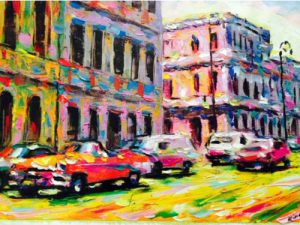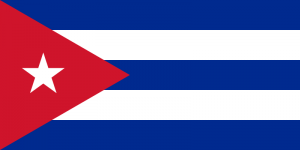By Carrol Dadisman, publisher, Tallahassee Democrat, 1981-97 | Americans visiting Cuba on recently-authorized “people to people” tours catch only glimpses of the burdens borne by 11 million Cubans still subjected to Communist rule. But they see flashes of change and innovation that eventually could unlock the latent potential of our island neighbor.
 There’s no hiding Cuba’s neglected, decaying infrastructure. Impressive architecture of Havana’s historic buildings and finer homes is marred by decades of disrepair. Away from the capital’s tree-lined boulevards and across the rural countryside, the scene is stark. Crumbling stucco, peeling paint and cracking walls reflect decades of inattention and inadequate resources. Interspersed are concrete skeletons of abandoned building projects. Through windowless holes of small square homes, an occasional breeze fluttering wooden blinds offers the only semblance of air-conditioning.
There’s no hiding Cuba’s neglected, decaying infrastructure. Impressive architecture of Havana’s historic buildings and finer homes is marred by decades of disrepair. Away from the capital’s tree-lined boulevards and across the rural countryside, the scene is stark. Crumbling stucco, peeling paint and cracking walls reflect decades of inattention and inadequate resources. Interspersed are concrete skeletons of abandoned building projects. Through windowless holes of small square homes, an occasional breeze fluttering wooden blinds offers the only semblance of air-conditioning.
The Communist government provides those homes, as well as free education and health care for all. But wages average only $25-$30 a month, barely enough to subsist on rice and beans, home-grown or purchased from neighborhood bodegos. Retail stores are almost non-existent.
The repressive regime continues to crush personal freedom and independence. The Castros control all government offices and most civil institutions. The Cuban military owns and/or controls most business. The news media, except for a few struggling independent voices, is owned by the state. Political dissension is punished, freedom of assembly severely restricted.
But Americans now flooding Cuban hotels and tourist sites see a largely different picture. On our four-day visit, we were greeted by upbeat, smiling Cubans at every stop. The burgeoning tourist trade — from Canada and Europe as well as the U.S. — boosts the earning power of Cuban guides, taxi and bus drivers, restaurant workers and hotel employees.
We dined sumptuously at private paladars, some of the growing number of privately-owned restaurants. We had a 16-dish lunch at an impressive organic farm and another in a Mediterranean-style villa restaurant that grows its own fresh fruits and vegetables.
 We saw the energy and talent of “Fusion and Passion,” a dance troupe of young Havanans whose unique, fast-paced dances to the beat of bongo drums recently earned them a performance in a Tampa theater. And we witnessed, throughout our visit, the optimism of our young Cuban guide who hoped “you have found a Cuba that is not all that we want it to be, but one that is better than you may have heard on Fox News.”
We saw the energy and talent of “Fusion and Passion,” a dance troupe of young Havanans whose unique, fast-paced dances to the beat of bongo drums recently earned them a performance in a Tampa theater. And we witnessed, throughout our visit, the optimism of our young Cuban guide who hoped “you have found a Cuba that is not all that we want it to be, but one that is better than you may have heard on Fox News.”
Cuba is changing, in incremental but important ways. The long-banned World Wide Web is now available to some, through internet cafes and wi-fi hotspots. Entrepreneurs are allowed to offer “El Pacquette,” periodic collections of foreign news reports, movies and other entertainment downloaded onto flash drives.
The influx of American travelers already is opening Cuban eyes to more possibilities and Cuban wallets to more pesos. Ultimate lifting of the U.S. embargo will give the economy a major jolt.
Will those cracks in the Communist tyranny lead to a freer Cuba? Improved U.S. relations, a slight relaxing of the government’s iron fist and the ingenuity of Cuban people combine to offer that hope.









Follow Us